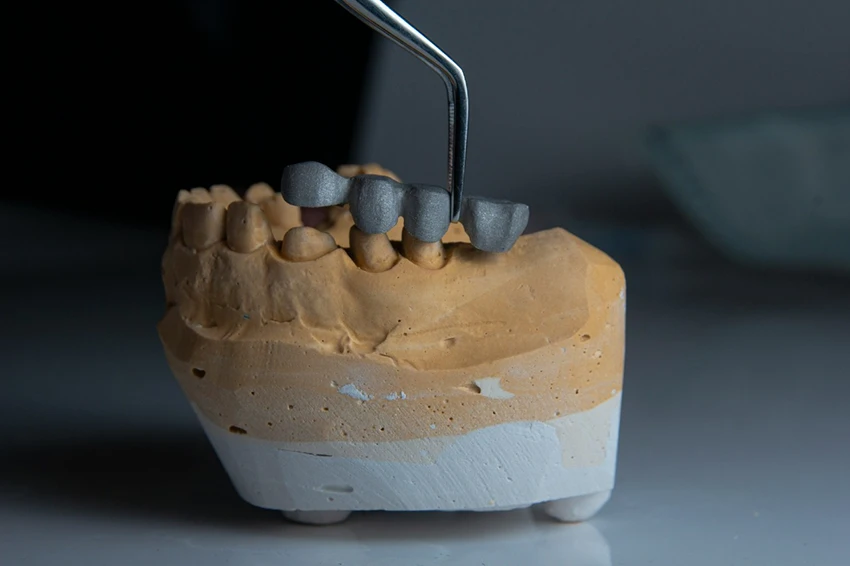Imagine this: you’ve been dealing with a dull, persistent ache in your tooth for weeks. At first, it was bearable, but now, the pain is intense, and even a simple sip of cold water sends shockwaves through your mouth. You’ve been avoiding the dentist, hoping it’ll just go away. But deep down, you know something’s wrong. You finally make an appointment, and the diagnosis is in root canal treatment.
For many, the idea of root canal treatment can feel overwhelming. After all, it’s often surrounded by myths and misconceptions. But what if I told you that this procedure is not only necessary but could be the very thing that saves your tooth and prevents unbearable pain? As someone who’s been through the experience firsthand, I can say with confidence that root canal treatment isn’t as scary as it’s often made out to be—and it can make a world of difference.
In this article, I’ll share my experience and guide you through everything you need to know about root canal treatment, from understanding what it is to the benefits it offers. Whether you’re dealing with tooth pain or simply want to understand the procedure better, this post will equip you with all the facts.
What Is Root Canal Treatment?
Before diving into the process, it’s important to understand what root canal treatment actually is. At its core, a root canal is a procedure designed to treat infections or damage within the pulp of your tooth. The pulp is the soft tissue inside the tooth that contains blood vessels, nerves, and connective tissue. When this pulp becomes infected due to decay, injury, or cracks in the tooth, it can lead to serious pain, swelling, and potential abscesses.
Root canal treatment involves removing the infected pulp, cleaning and disinfecting the inside of the tooth, and then filling it with a biocompatible material. This helps save the tooth from extraction and restores its functionality.
Why Root Canal Treatment Is Important?
So, why exactly is root canal treatment so essential? When an infection or damage reaches the pulp of a tooth, it can cause severe pain and, if left untreated, lead to the loss of the tooth. Infections can also spread to surrounding teeth and even cause systemic issues like fever or swelling.
Without a root canal, the tooth might need to be extracted, which can lead to further complications. Not to mention, missing teeth can impact your ability to chew, affect your appearance, and change your bite alignment. Root canal treatment offers a way to preserve your tooth and maintain your overall oral health.
The Process of Root Canal Treatment
Step 1: Diagnosis and X-Rays
The journey begins when you visit your dentist to address the pain. After a thorough examination and likely some X-rays, your dentist will be able to determine the extent of the damage or infection. The X-rays help visualize the infection’s size, the condition of the pulp, and whether the infection has spread to the bone around the tooth.
Step 2: Local Anesthesia
If you’re worried about the pain of the procedure, don’t be. Root canal treatment is performed under local anesthesia, meaning the area around your affected tooth will be numbed. You’ll remain awake during the procedure, but you won’t feel any pain or discomfort.
Step 3: Removal of the Pulp
Once you’re comfortable, the dentist will make a small opening in the crown (top) of the tooth. Through this opening, the infected or damaged pulp is carefully removed. The dentist will also clean and shape the root canals to ensure that all infection is eliminated.
Step 4: Filling and Sealing the Tooth
After cleaning, the tooth is filled with a special material called gutta-percha, which seals the root canals to prevent further infection. In some cases, a temporary filling is placed to allow the area to heal before a permanent filling is applied.
Step 5: Restoration
After the root canal is completed, the tooth will likely need a crown to restore its strength and protect it from future damage. A crown is custom-made to fit over the treated tooth, ensuring it looks and functions just like the rest of your teeth.
Benefits of Root Canal Treatment
1. Pain Relief
One of the most immediate benefits of root canal treatment is the relief from pain. The procedure eliminates the infection and the pressure it causes on the nerves inside the tooth, allowing you to return to your normal activities without discomfort.
2. Preserving Your Natural Tooth
While tooth extraction is sometimes necessary, root canal treatment provides a less invasive option for preserving your natural tooth. This helps you avoid the long-term consequences of missing teeth, such as difficulty chewing, changes in your bite, and even jawbone loss.
3. Preventing Infection Spread
Root canal treatment not only addresses the issue at hand but also prevents the infection from spreading to nearby teeth or the jawbone. By removing the infected pulp and sealing the tooth, you significantly reduce the risk of complications.
4. Improved Oral Health
By saving the tooth and preventing further infection, root canal treatment helps maintain your overall oral health. You’ll be able to continue eating and speaking comfortably, all while protecting your smile.
Common Misconceptions About Root Canal Treatment
“Root Canal Treatment is Extremely Painful”
One of the most common myths about root canal treatment is that it’s a painful procedure. In reality, the pain from the infection itself is much worse than the procedure. Thanks to local anesthesia and modern techniques, most patients report little to no discomfort during the procedure.
“Root Canal Treatment is Expensive”
While the cost of root canal treatment can vary depending on the tooth being treated, it’s often more cost-effective in the long run than having the tooth extracted and replaced with a dental implants Cranbourne or bridge. Additionally, saving your natural tooth helps prevent further oral health issues that could lead to additional costs down the line.
“Root Canal Treatment Isn’t Worth It”
Many people hesitate to pursue root canal treatment due to fears of complexity or effectiveness. However, when done properly, root canal treatment has a high success rate and can last for many years. Saving a tooth is always the best choice for your long-term oral health and quality of life.
How Long Does a Root Canal Treatment Last?
Root canal treatments can last for many years if the tooth is well cared for. With proper oral hygiene, including regular brushing and flossing, the treated tooth can remain functional and pain-free for the rest of your life. In some cases, the tooth may require a crown to further protect it, especially if it’s a molar or located in a high-pressure area of the mouth. At Nuffield Dental Nuffield Dental, our expert team ensures that the treated tooth is properly restored and cared for, helping you maintain optimal oral health and longevity of the treatment.
Conclusion
Root canal treatment may sound intimidating at first, but it’s an incredibly effective procedure for saving your tooth and relieving pain. By addressing infections early and preserving your natural teeth, root canals offer long-term benefits for both your oral health and your quality of life. If you’re experiencing persistent tooth pain or discomfort, don’t hesitate to seek professional dental care. The sooner you address the problem, the sooner you can enjoy pain-free days and a healthy, happy smile.
FAQ Section
Q1: How do I know if I need a root canal?
Common signs that you may need a root canal include persistent tooth pain, sensitivity to hot or cold, swelling or tenderness in the gums, or the appearance of a pimple-like bump on the gums.
Q2: Is root canal treatment safe?
Yes, root canal treatment is a safe and common procedure with a high success rate. It’s performed under local anesthesia, and modern techniques have made the process more effective and less invasive than ever before.
Q3: Can I eat after a root canal?
After the procedure, it’s best to avoid eating until the anesthesia has worn off completely to prevent accidentally biting your tongue or cheek. Once the anesthesia has worn off, you can eat normally but should avoid hard or chewy foods until the tooth is fully restored with a crown.
Q4: How long does the recovery process take?
Most people experience minimal discomfort after a root canal, and recovery typically takes a few days. It’s important to follow your dentist’s aftercare instructions to ensure proper healing.
Q5: Will I need a follow-up appointment?
In some cases, a follow-up appointment may be necessary to ensure the tooth is healing properly. Your dentist will advise you on the best course of action based on your specific situation.
Disclaimer
This article provides general information about root canal treatment, dental health, and related care options. It is intended for informational purposes only and should not be taken as medical or dental advice, diagnosis, or treatment. Always consult a qualified dentist or endodontist before undergoing any dental procedure, including root canal therapy, tooth extraction, or implant placement.
All images used in this article are for illustrative reference only and do not depict real patients or procedures. WellHealthOrganic.com and the author are not doctors or licensed dental professionals. The information shared here is based on publicly available knowledge and general oral health awareness.
By reading or acting upon this article, you acknowledge that all health-related decisions are your sole responsibility, and WellHealthOrganic.com shall not be held liable for any consequences, loss, or harm resulting from its use. External links, such as references to dental implants Cranbourne, are provided solely for general information and do not imply endorsement, recommendation, or partnership with any clinic, practitioner, or service.
















